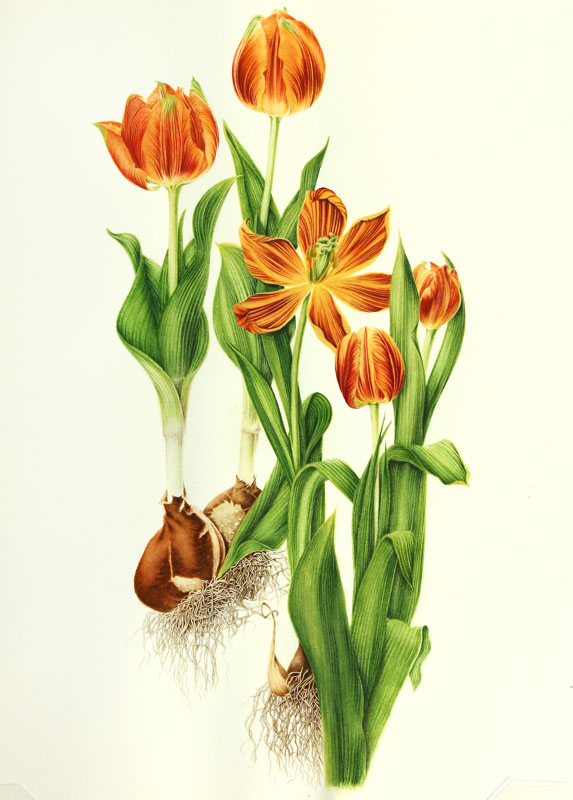Prints available

Guess which wild flower native to Central Asia took western Europe by storm in the 17th century, built and collapsed fortunes, served as currency, led some to murder, others to suicide? None other than the tulip, of course!
Tulbend, the Turkish word for turban, which the flower resembles, is the source of the plant’s name, though it is called laleh in Persia and Turkey. The diversity of the genus is located in the Pamir and Hindu Kush ranges of the Himalayas and the steppes of Asia Minor. Most cultivars of tulip are derived from Tulipa gesneriana, and adorned the gardens of Sultans and the privileged who could afford such indulgence. The flamboyant colors and elegant chalice-shape of Tulips are instantly recoginzable and have been celebrated by artists, poets and folklorists, weavers and jewellers, architects and novelists, over many centuries.
Each stem puts forth one bloom, but a few species have up to four flowers. The colorful and attractive cup-shaped flowers typically have three petals and three sepals, more correctly tepals. The bloom has six distinct stamens and three-lobed stigma. The fruits are leathery textured three angled capsules, containing flat disc-shaped seeds in two rows per locule. Evidence of sacred geometry!
The delicate feathered patterns most admired come from potyvirus, the mosaic virus carried by green peach aphids, Myzus persicae, common in European gardens of the 17th century. The virus produced fantastically colored flowers but also weakened the plants which slowly died.
Accounts of the fortunes and bankruptcies of 17th and 18th century European speculators and investors embroiled in Tulipomania read like thrillers, even though the theme is so familiar in our own times.